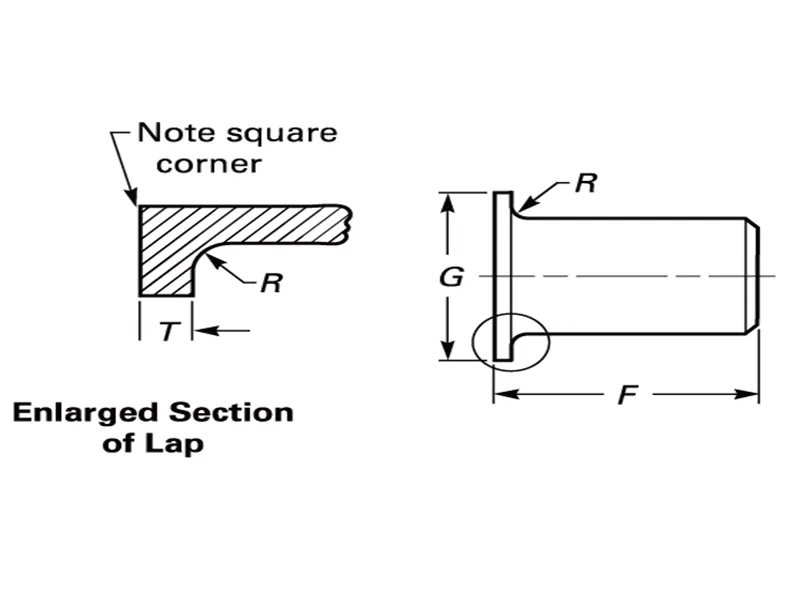Stub End Pipe Fittings
Stub end pipe fittings are essential components used in piping systems, designed to facilitate the connection of pipes to flanges. These fittings consist of a short piece of pipe with one flared end and one straight end, typically used in conjunction with a lap joint flange. The flared end is connected to the pipe, while the lap joint flange slips over the straight end, allowing for easy assembly and disassembly. Stub ends are often used in systems where frequent dismantling for inspection, cleaning, or replacement is required, providing flexibility and cost-efficiency. If you are interested in our stub end pipe fittings, please contact us.
REFINE BY
- Flange Manufacturer
- Flange standard
- Welding Neck Flange
- Stainless steel Flange
- Carbon & Alloy steel Flange
- Blind Flange
- Lap Joint Flange
- Orifice Flange
- Threaded Flange
- Swivel Ring Flange
- Reducing Flange
- Slip-On Flange
- Spectacle Blind Flange
- Compact Flange
- 1/2" (24)
- 3/4" (24)
- 1" (24)
- 1-1/4" (24)
- 1-1/2" (24)
- 2" (25)
- 2-1/2" (24)
- 3" (24)
- 4" (20)
- 4" (20)
- 304L (179)
- 316L (179)
Stub End Pipe Fittings Models

Types Of Pipe Stub End
These are the most commonly used stub ends, featuring a long straight length that provides extra strength and stability. Type A stub ends are typically used in high-pressure applications where additional support is needed.
These have a shorter straight length compared to Type A, making them suitable for low-pressure applications. They are often used in systems where space is limited and where the pipeline requires frequent disassembly.
These are manufactured according to the Manufacturing Standardization Society (MSS) SP-43 standards. They have dimensions and specifications that differ slightly from Type A and Type B stub ends, catering to specific industrial needs.
Installation Procedures For Stub End Fitting
- Prepare the pipes and fittings by cleaning the ends of the pipes and inspecting the stub ends and lap joint flanges for any damage or defects. Ensure that all components are free from debris and ready for installation;
- Align the stub end with the pipe end, ensuring that the flared end of the stub end matches the pipe's diameter and sits flush against it. Ensuring correct alignment is crucial for a secure and leak-proof connection;
- Weld the stub end to the pipe using appropriate welding techniques. Depending on the material, different welding methods such as TIG (Tungsten Inert Gas) or MIG (Metal Inert Gas) welding may be used. Ensure that the weld is smooth and free from any defects;
- Once the stub end is securely welded to the pipe, slide the lap joint flange over the straight end of the stub end. Ensure that the flange is properly seated and aligned with the mating flange or equipment;
- Align the lap joint flange with the mating flange or equipment. Insert bolts through the flange holes and tighten them evenly in a cross-pattern to ensure a secure and leak-free connection. Use appropriate torque settings based on the flange size and material;
- After installation, inspect the joint for any signs of leakage or misalignment. Perform necessary tests, such as pressure testing, to verify the integrity of the connection. Address any issues promptly to ensure the proper functioning of the pipeline.
Materials Used In Stub End Pipe Fittings
Stainless Steel
Stainless steel stub ends are renowned for their excellent corrosion resistance and durability. They are widely used in industries such as chemical processing, food and beverage, pharmaceuticals, and water treatment. Stainless steel grades such as 304, 316, and 316L are common choices, with 316L offering superior resistance to corrosion and staining.

Carbon Steel
Carbon steel stub ends are favored for their strength and affordability. They are often used in applications involving oil and gas, power generation, and water treatment. Carbon steel stub ends can be treated with coatings or linings to enhance their resistance to corrosion and extend their service life.

Alloy Steel
Alloy steel stub ends are designed to withstand extreme temperatures and pressures. They are used in high-stress environments such as power generation and heavy industry. Alloy steel compositions, including those with chromium, molybdenum, and vanadium, provide enhanced mechanical properties and resistance to high temperatures.

Common Challenges And Solutions In Using Stub End Pipe Fittings
Misalignment during installation can lead to leakage and reduced pipeline performance. To avoid this, ensure that the pipes and fittings are properly aligned before welding. Using alignment tools and fixtures can help achieve precise alignment.
Welding defects such as porosity, cracks, or incomplete fusion can compromise the integrity of the connection. To mitigate this, use qualified welders and appropriate welding techniques. Conduct thorough inspections and non-destructive testing (NDT) to detect and address any defects.
In corrosive environments, selecting the appropriate material for stub end fittings is crucial. Stainless steel, duplex stainless steel, and nickel alloys are excellent choices for corrosive applications. Regular inspections and maintenance can help identify and address corrosion issues before they become severe.
Pipelines exposed to temperature fluctuations may experience thermal expansion and contraction, leading to stress and potential damage. The use of stub ends with lap joint flanges allows for rotational movement, accommodating thermal expansion and contraction and reducing stress on the pipeline.
Ensuring a leak-free connection is vital for the safe and efficient operation of the pipeline. Proper tightening of bolts in a cross-pattern and using high-quality gaskets can help achieve a secure and leak-free connection.
In systems involving different materials, material compatibility is essential to prevent galvanic corrosion and other issues. Ensure that the materials used for stub end fittings, flanges, and gaskets are compatible with each other and the fluid being transported.
Stub End Pipe Fittings Manufacturer
Elite Piping Manufacture Co., Ltd. is a leading provider of high-quality stub end pipe fittings, renowned for our expertise in manufacturing and supplying robust and reliable components for various industrial applications.
The company specializes in producing stub end fittings in a wide range of materials, including stainless steel, carbon steel, and alloy steel, adhering to international standards such as ASME, MSS, and ASTM. Elite Piping’s commitment to precision engineering and quality assurance ensures that our stub end fittings deliver exceptional performance in demanding environments, from chemical processing and oil and gas to water treatment and pharmaceuticals.
With a focus on innovation and customer satisfaction, Elite Piping Manufacture Co., Ltd. stands out as a trusted partner for industry-leading solutions in pipe fitting technology.
GET IN TOUCH
Company:
Elite Piping Manufacture Co., Ltd.
Factory Address:
Office # 805, Building No. 6 Poly Metropolitan, Yongshum Town, Tongzhou District, Beijing, China.
Contact Person:
Michael
Contact Numbers:
+86 186 1829 1381
Email:
elite@elitepiping.com







